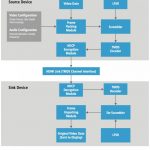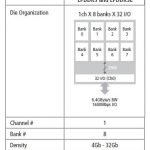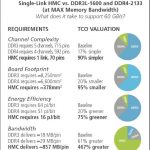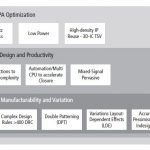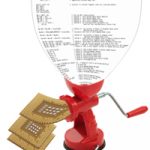VIPs (Verification IPs) are really important in this complex world of SoCs which involve various IPs, interfaces and continuously evolving protocols and standards, thus making the task of verifying an overall system extremely challenging. And the verification must be done in minimum possible run-time and memory consumption.… Read More
Tag: cadence
A Mixed-Signal IC Summit in San Jose
Analog and mixed-signal ICs are tougher to design and verify compared to digital, so if you want to learn more about best practices from actual AMS engineers then consider attending a summitthat is sponsored by Cadence Design Systems next Thursday, October 10th in San Jose from 8:00AM until 6:30PM.
They’ve lined up an interesting… Read More
Who is Blogging at Cadence?
As a blogger in the EDA industry I get to write every week, however I also end up reading every blog on SemiWiki plus multiple other sites to keep current on what’s happening in our business. I thought that it would be informative to look at Cadence Design Systems and how they are using blogging to talk not just about their own EDA… Read More
Emerging Trend – Choose DRAM as per Your Design Need
Lately I was studying about new innovations in memory world such as ReRAM and Memristor. As DRAM (although it has become a commodity) has found its extensive use in mobile, PC, tablet and so on, that was an inclination too to know more about. While reviewing Cadence’s offering in memory subsystems, I came across this whitepaperwhich… Read More
Cadence Introduces Palladium XP II
Well, despite all the arguments in the blogosphere about what process node palladium’s silicon is, and whether the design team is competent, and why it reports into sales…Cadence has announced their latest big revision of Palladium. Someone seems to be able to get things done. Of course it is bigger and faster and … Read More
Rapid Yield Optimization at 22nm Through Virtual Fab
Remember? During DAC2013 I talked about a new kind of innovation: A Virtual Fabrication Platform, SEMulator3D, developed by COVENTOR. Now, to my pleasant surprise, there is something to report on the proven results from this platform. IBM, in association with COVENTOR, has successfully implemented a 3D Virtual Fabrication… Read More
Did you miss Cadence’s MemCon?
That’s too bad, as you have missed latest news about the Hybrid Memory Cube (presentation by Micron), Wide I/O 2 standard, as well as other standards like LPDDR4, eMMC 5.0, and LRDIMM,the good news is that you may find all these presentations on MemCon proceedings web site.
I first had a look at Richard Goering excellent blog: wideI/O… Read More
20nm IC production needs more than a ready Foundry
I think by now all of us know, or have heard about 20nm process node, its PPA (Power, Performance, Area) advantages and challenges (complexity of high design size and density, heterogeneity, variability, stress, lithography complexities, LDEs and so on). I’m not going to get into the details of these challenges, but will ponder… Read More
Happy Birthday Dear Cadence…
Cadence is 25 years old this year, on June 1st if you want to be precise.
The most direct ancestor of Cadence was SDA (which might or might not have stood for Solomon Design Automation). SDA was founded by Jim Solomon in 1983. It turns out that a guy I shared an office with while we were both doing our PhDs in Edinburgh Scotland was one of … Read More
Electronic System Level: Gary Smith
Gary Smith has been talking about how the electronic system level (ESL) is where the future of EDA lies as design teams move up to higher levels encompassing IP blocks, high level synthesis, software development using virtual platforms and so on. At DAC this year in Austin he talked about how the fact that EDA controls the modeling… Read More


